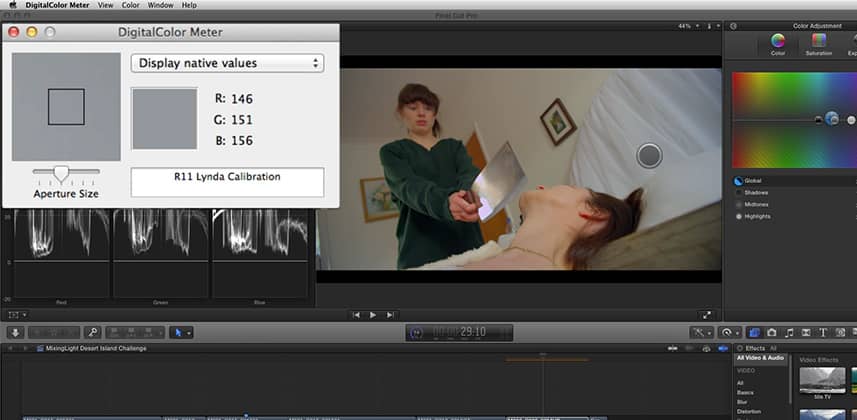| Series |
|---|
Day 6: 25 Insights in 25 Days Holiday Marathon
What is a ‘Desert Island Challenge?’
You know the question: If you were stuck on a desert island and could only bring one book/record/movie, what would it be?
Here’s the color correction equivalent: If you were stuck on a desert island with only Final Cut Pro X—and no plug-ins—and a project you had to color correct, how would you go about it?
Welcome to the Final Cut Pro X Color Correction Desert Island Challenge
This is a short series of Insights where I show you how I evaluate Final Cut Pro X’s image processing pipeline to help you make smart decisions about which FCPx tools to use and when.
As if I were stuck on a desert island, I’ll restrict myself to using ONLY the native filter set in FCPx (at the end of this series I’ll explore the question: If I could only bring 1 color correction plug-in, which would it be?)
I’m approaching this Challenge by answering: How do I transfer my DaVinci Resolve and SpeedGrade habits to FCPx, while being restricted to its (more limited) toolset.
I’ll say this up-front: If I had to grade in FCPx and do high-quality work that I can be proud of… I could do it. This series will show you how I’d approach it.
And it all starts by breaking down the toolset to develop a workflow.
Adopt my thinking, Adapt to your workflow
The point of this series isn’t to provide the Single Definitive Final Cut Pro X Color Correction workflow. The point of this series is to teach you how I break down toolsets to help me understand how to develop a workflow in the first place!
And since each of us has a different workflow, we’ll develop different strategies to solve our unique workflows. But knowing how I created my workflow? Knowing why I make the recommendations I do?
Once you understand How and Why I approach FCPx the way I do, you’ll be able to do this same thing for ANY color grading app you use. Always.
In other words: rather than handing you a fish filet, I’m teaching you how to catch a fish and then use a knife to trim it.
Final Cut Pro X: Primary Color Corrections and Order of Operations
This Insight will focus on making our Primary corrections and understanding the Order of Operations I’ll be advocating for working in FCPx.
At the moment I’m ignoring the Auto-Balance function… but we’ll probably discuss it later in the Challenge.
We’ll also look at supplementing the FCPx interface with a super-useful image evaluation tool that has shipped with every Mac for over 20 years!
Related Insights
In mid-2013 I did a two-Insight series on breaking down Final Cut Pro X’s Color Board. If you don’t remember it (or have’t watched it), I suggest you watch those two Insights first – since I won’t be repeating that information here and I will be building on it:
– Watch: Color Board Foundations, Part 1
– Watch: Color Board Foundations, Part 2
Enjoy!
– pat
Member Content
Sorry... the rest of this content is for members only. You'll need to login or Join Now to continue (we hope you do!).
Need more information about our memberships? Click to learn more.
Membership optionsMember Login


